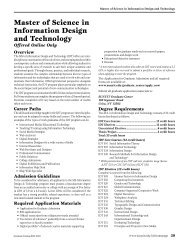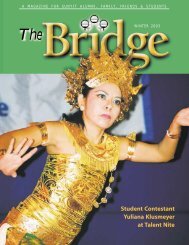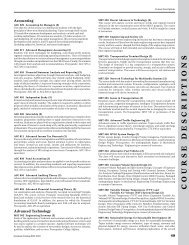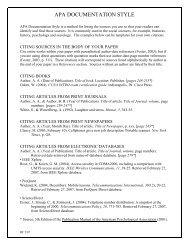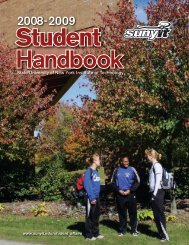Expanding the Public Sphere through Computer ... - ResearchGate
Expanding the Public Sphere through Computer ... - ResearchGate
Expanding the Public Sphere through Computer ... - ResearchGate
Create successful ePaper yourself
Turn your PDF publications into a flip-book with our unique Google optimized e-Paper software.
CHAPTER 4. ABORTION DISCOURSE IN THE PUBLIC SPHERE 66<br />
discretion on <strong>the</strong> part of doctors. All were squarely aimed at professional audiences<br />
in <strong>the</strong> legal, medical, educational and religious professions. In 1954, <strong>the</strong><br />
Planned Parenthood Federation of America organized a conference focused only<br />
on induced abortion, concluding that revised laws that “recognize <strong>the</strong> mounting<br />
approval of psychiatric, humanitarian, and eugenic indications for <strong>the</strong> legal termination<br />
of pregnancy” (Calderone 1958, 182) were necessary. To that end, organizations<br />
such as <strong>the</strong> National Conference of Commissioners on Uniform State<br />
Laws, <strong>the</strong> American Law Institute, and <strong>the</strong> Council of State Governments, are<br />
called upon to develop model laws legalizing abortion, and to educate both citizens<br />
and professionals about <strong>the</strong> issue. The American Law Institute heeded <strong>the</strong><br />
call in 1959, drafting a model abortion statute that legalized abortion in cases of<br />
rape, incest, danger to <strong>the</strong> health of <strong>the</strong> mo<strong>the</strong>r, and indications of fetal abnormality<br />
(Institute 1959). Therapeutic Abortion, edited by Harold Rosen and published<br />
in 1954, emerged from a panel at <strong>the</strong> 1952 meetings of <strong>the</strong> American Psychiatric<br />
Association. The Sanctity of Life and <strong>the</strong> Criminal Law, written by Glanville<br />
Williams and published in 1957 , focused on <strong>the</strong> legal aspects of abortion; while<br />
Alfred Kinsley’s Pregnancy, Birth and Abortion (1958) examined medical issues<br />
(Krason 1984, Olasky 1988b, Staggenborg 1991).<br />
Abortion discourse during <strong>the</strong> latter stages of <strong>the</strong> criminalization period moved<br />
from <strong>the</strong> protected and gentile confines of <strong>the</strong> professional associations onto <strong>the</strong><br />
public stage. The impetus for this movement includes two “critical discourse<br />
moments” (Gamson & Modigliani 1989), <strong>the</strong> Finkbine case and <strong>the</strong> associated<br />
thalidomide scare in 1962, and <strong>the</strong> Rubella epidemic in California in 1964. The<br />
roots of <strong>the</strong> Finkbine case are in Europe in <strong>the</strong> early 1960s, when a sharp increase<br />
in <strong>the</strong> birth of babies with deformed or underdeveloped limbs was associated with<br />
exposure by <strong>the</strong> mo<strong>the</strong>r to <strong>the</strong> tranquilizer thalidomide during <strong>the</strong> early stages of<br />
pregnancy. In <strong>the</strong> summer of 1962, Sherri Finkbine, a Phoenix, Arizona woman<br />
in her fourth month of pregnancy, discovered that a tranquilizer she had taken<br />
contained high doses of thalidomide. When her dilemma was publicized in a local<br />
newspaper, her scheduled abortion at a local hospital was postponed, and <strong>the</strong>n<br />
canceled, when <strong>the</strong> Courts in Arizona refused to clarify <strong>the</strong> legality of <strong>the</strong> procedure.<br />
Finkbine’s case became <strong>the</strong> subject of numerous magazine and newspaper<br />
stories, and for <strong>the</strong> first time, introduced discussion about <strong>the</strong> morality of abortion<br />
into <strong>the</strong> public sphere occupied by ordinary people (Luker 1984, Krason 1984).<br />
Two years after <strong>the</strong> Finkbine case, popular attention again focused on abortion<br />
during <strong>the</strong> Rubella epidemic in <strong>the</strong> United States. Newspaper and magazine articles<br />
explored <strong>the</strong> link between <strong>the</strong> disease and fetal deformity, and drew fur<strong>the</strong>r





